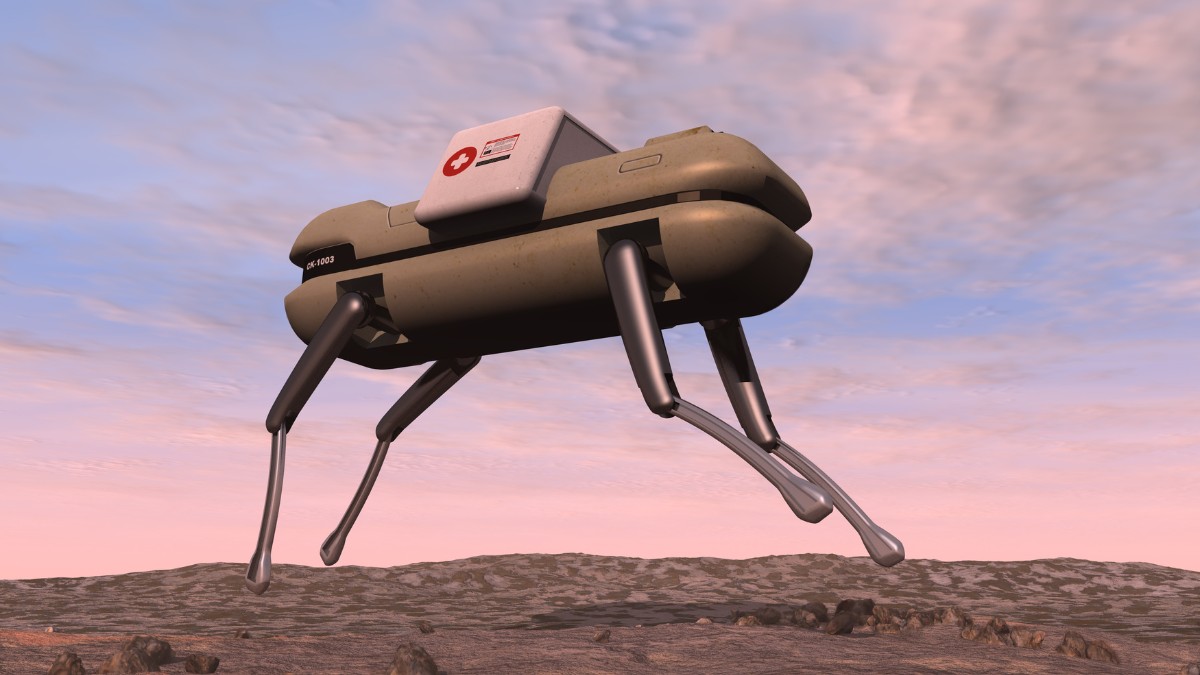In this article, we’ll examine the impressive advancements in quadrupedal robots and how Google’s DeepMind has introduced a new standard to measure their performance.
We’ll delve into the reasons behind the development of this groundbreaking benchmark known as “Barkour”, and how it works to accurately assess the capabilities of these four-legged robotic companions.
Key Takeaways:
- Quadrupedal robots are already making their presence felt in various industries, such as power plant inspections and law enforcement.
- DeepMind, a part of Google, has released a new benchmarking system, “Barkour”, to measure the performance of these quadrupedal robots.
- Inspired by the agility of real animals, the Barkour test uses an obstacle course to evaluate the capabilities of the robots.
- Barkour can be easily customized and has proven its effectiveness even when unexpected events and hardware issues occur.
- The development of this benchmark is seen as a crucial step towards achieving animal-level agility in robotic designs.
Quadrupeds: The Four-Legged Robots Among Us
In the realm of robotics, four-legged machines are already making their mark.
They’ve migrated from labs into real-world applications: conducting inspections in power plants and refineries, participating in soccer games, and even taking on roles in law enforcement.
Notable among them is Boston Dynamics’ Spot, the four-legged robot that has become instantly recognizable worldwide.
Nonetheless, it’s not just about Boston Dynamics.
Numerous startups and research institutions have added their interpretations to this category of robots.
Even tech giant Xiaomi has taken a surprising step into the quadruped robot landscape.
These quadrupeds are already achieving feats while their two-legged counterparts are still in experimental stages.
Barkour: DeepMind’s Answer to Quadrupedal Robot Benchmarking
Google’s DeepMind, renowned for its groundbreaking artificial intelligence research, recently proposed a novel approach to evaluating the performance of these quadrupedal machines.
The team released a research paper detailing an intriguing benchmarking system aptly named “Barkour.”
This system aims to establish a standard for determining the efficiency of these quadrupedal robots.
By setting a baseline, Barkour opens up possibilities for comparing, contrasting, and quantifying the performance across different makes and models.
An Animal-Inspired Obstacle Course for Robots
The DeepMind team drew inspiration from the natural world to develop Barkour.
It’s a well-acknowledged fact that these machines emulate the movements and functions of animals, so why not benchmark them against the real deal?
Consequently, the team set up an obstacle course akin to those used in dog agility competitions.
The area was densely packed with four obstacles within a 5×5 meter space, a higher density compared to typical dog shows.
The idea was to replicate the kind of challenges a dog would face and see how well the robot could negotiate these.
Barkour’s Effectiveness and Adaptability
The performance of these quadruped robots is assessed on a scale of zero to one, a simple binary score to evaluate whether the machine can traverse the course as swiftly as a similarly sized dog.
Penalties apply for slow speeds or failing to overcome the obstacles.
But the Barkour test isn’t just about passing or failing.
Even amidst unexpected events or hardware glitches, the test proved to be a sturdy benchmark.
A remarkable example from the trials was a robot dog that, after stumbling, managed to get back up, return to the starting line, and continue with the course on its own, underscoring Barkour’s reliability.
Benchmarking: A Leap Towards Animal-Level Agility
The significance of Barkour extends beyond mere performance assessment.
By establishing a benchmark for quadrupedal robots, DeepMind has initiated a concrete way to measure progress towards achieving animal-level agility in these machines.
The benchmark can be easily adjusted to suit different conditions, and its learning-based method allows the robots to master a range of agile skills.
This is a vital stride towards the future where robots could efficiently emulate, and perhaps even surpass, the agility and versatility of their natural counterparts.
Conclusion
The introduction of ‘Barkour’ represents a significant leap in the field of quadrupedal robotics.
This benchmark, developed by Google’s DeepMind, showcases the rapid strides being made in the field and the increasing capabilities of these machines.
From running inspection tasks to playing soccer, the quadrupeds are already outperforming their bipedal counterparts.
With the development of a standardized measure of performance, the industry can better quantify progress and set targets for future innovations.
‘Barkour’ has effectively set a new bar for the robotic industry, ushering in a new era where robot dogs might not just be man’s best friend, but also his most efficient and reliable working companion.
 Sections of this topic
Sections of this topic
















